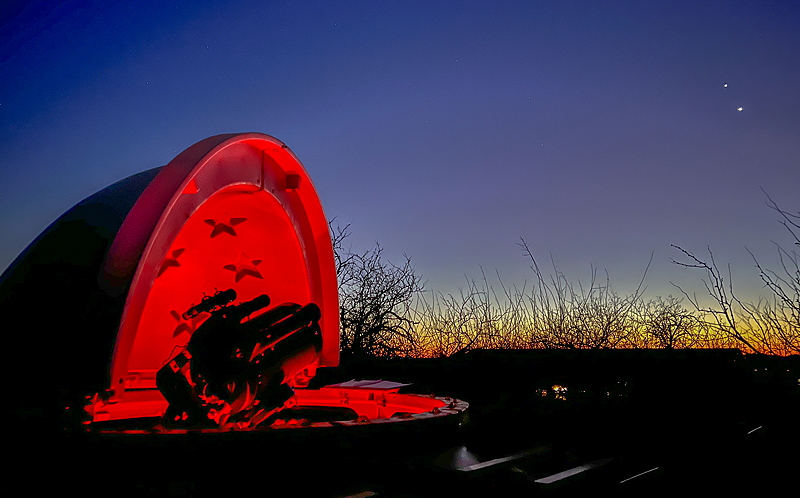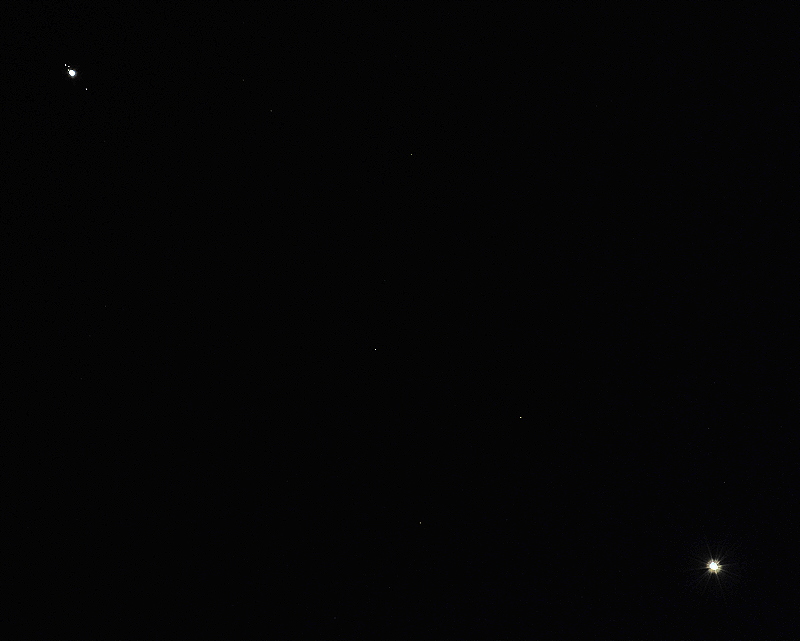Jupiter-Venus conjunction,
More Herschel 400 observing
Posted: 28 February 2023
|
Open: Monday, 27 February 2023, 1816 MST Temperature: 63°F |
Session: 1838 Conditions: Mostly clear |
Equipment:
12" f/8 LX600 w/StarLock
2" 24mm UWA eyepiece
Camera:
iPhone 13 Pro Max
D850 DSLR
1820 MST: LX600 ON, StarLock OFF, High Precision OFF.
Viewed Venus, then Jupiter, 102X.
Viewed Jupiter and Venus, 12x50 binoculars. The planets were 2.2° apart so both easily fit in the 4.6° field-of-view of the binoculars.
1900 MST: Began photographing the Jupiter-Venus conjunction. Jupiter is above and left of Venus.
iPhone 13 Pro Max, Camera app (Night Mode, 3 seconds, 1X lens)

D850 DSLR (f/8, 1/4sec, FL 600mm, slight crop)

1914 MST: High Precision ON.
Viewed the following Herschel 400 Catalog open clusters, 102X: NGC2186, NGC2194, NGC2204, NGC2215, NGC2232, NGC2244, NGC2251, NGC2264 (Christmas Tree Cluster, Cone Nebula faintly visible), NGC2266, NGC2281, and NGC2286. I tried to view NGC2185 (nebula), but it was not visible in the bright moonlit sky. I have now observed 127 objects in the Herschel 400 Catalog.
Viewed the Moon, 102X.
Took this handheld iPhone 13 Pro Max afocal 102X photo using NightCap Camera (ISO 34, 1/710sec, 1X lens).

1951 MST: LX600 OFF.
|
Close: Monday, 27 February 2023, 2001 MST Temperature: 44°F |
Session Length: 1h 45m Conditions: Clear |
Comments are welcome using Email. Twitter users can use the button below to tweet this report to their followers. Thanks.
Cassiopeia Observatory Home Page
Copyright ©2023 Michael L. Weasner / mweasner@mac.com. Email Etiquette.
URL = http://www.weasner.com/co/Reports/2023/02/28/index.html
